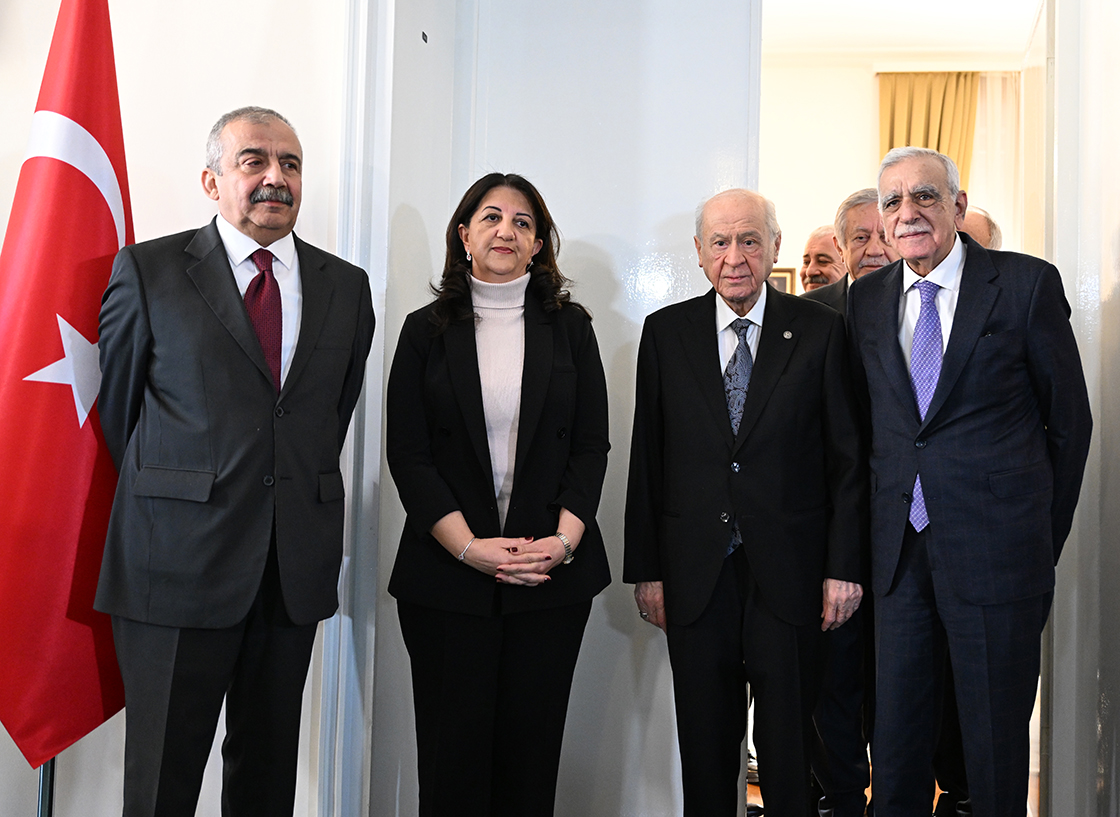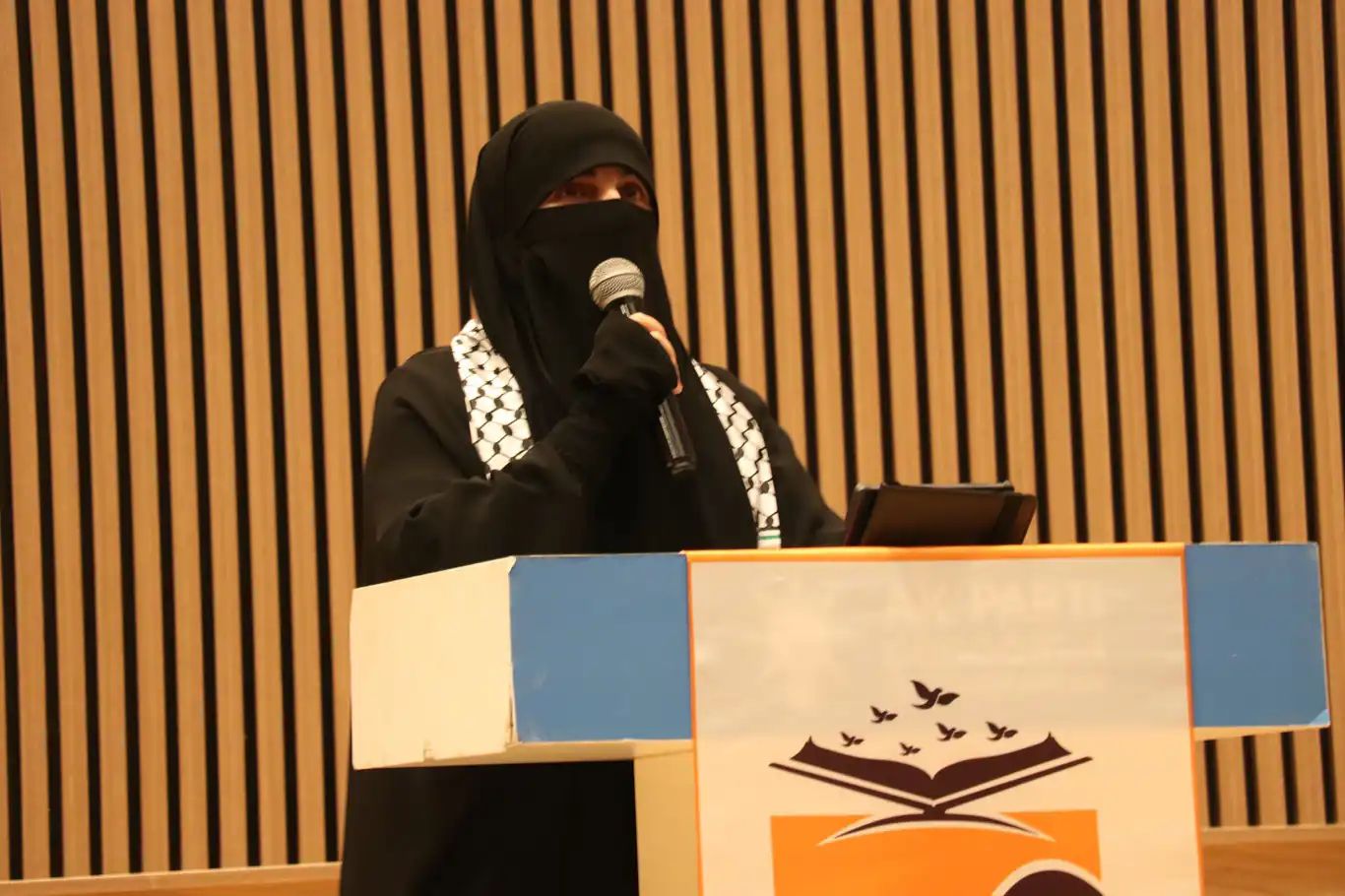Türkiye: Mean age at first marriage was 25.6 for females, and 28.2 for males
Females constituted 49.9% and males constituted 50.1% of the population of Türkiye, the Turkish Statistical Institute said on Monday.

 Google News'te Doğruhaber'e abone olun.
Google News'te Doğruhaber'e abone olun. According to the results of the Address Based Population Registration System, while the female population was 42 million 575 thousand 441 persons, the male population was 42 million 704 thousand 112 persons in 2022.
In other words, females constituted 49.9% and males constituted 50.1% of the total population. This proportional balance between females and males has changed in favor of females as from the age group of 60 and over due to the longer lives of females. While the proportion of the female population was 52.2% in 60-74 age group, it was 72.4% in the 90 and over age group.
The proportion of females completing at least one level of education was 87.3%
According to the results of the National Education Statistics Database between the years of 2008 and 2021, it was observed that the proportion of those aged 25 and over who completed at least one level of education in total population has increased over the years. The proportion of individuals aged 25 and over who completed at least one level of education within the total population was 81.1% in 2008 and 92.1% in 2021. When the proportion of those aged 25 and over who completed at least one level of education was analyzed by sex, this proportion was 72.6% for females and 89.8% for males in 2008, and it was 87.3% for females and 97.1% for males in 2021.
Tertiary graduation rate of females aged 25 years and over was 20.9%
While the ratio of the population aged 25 and over who graduated from university, faculty, master and doctorate degrees in the total population was 9.8% in 2008, it became 23.0% in 2021. When this rate was analyzed by sex, it was seen that the tertiary graduation rate aged 25 and over was 7.6% for females and 12.1% for males in 2008, this rate was 20.9% for females and 25.1% for males in 2021.
Labor force participation rate of women with higher education was 67.6%
According to the results of the household labor force survey, the labor force participation rate for those aged 15 and over was 51.4% in 2021. This rate was 32.8% for women and 70.3% for men.
When the labor force participation rate was analyzed by level of education, it was seen that the high level of education of women, the more the labor force participation. While the labor force participation rate of illiterate women was 12.8%, the labor force participation rate of women with less than high school education was 25.3%, the labor force participation rate of women with high school graduates was 32.5%, the labor force participation rate of women with vocational or technical high school graduates was 38.5%, and the labor force participation rate of women with higher education graduates was 67.6%.
Female employment rate was seen less than half of male's employment rate
According to the results of the household labour force survey, it was seen that the proportion of those who were 15 years of age and over and in employment was 45.2% in 2021. This proportion was 28.0% for females and 62.8% for males.
The highest employment rate realized in TR21 (Tekirdağ, Edirne, Kırklareli) region with 52.0%, the lowest employment rate realized in TRC3 (Mardin, Batman, Şırnak, Siirt) region with 29.9%.
The highest female employment rate realized in TR90 (Trabzon, Ordu, Giresun, Rize, Artvin, Gümüşhane) region with 36.8%. This region was followed by TR82 (Kastamonu, Çankırı, Sinop) with 35.6%, TR83 (Samsun, Tokat, Çorum, Amasya) with 33.8%.
The lowest female employment rate realized in TRC3 (Mardin, Batman, Şırnak, Siirt) region with 14.5%. This region was followed by TRC2 (Şanlıurfa, Diyarbakır) with 15.9%, TRB2 (Van, Muş, Bitlis, Hakkari) with 19.6%.
The highest male employment rate realized in TR21 (Tekirdağ, Edirne, Kırklareli) region with 70.0%. This region was followed by TRC1 (Gaziantep, Adıyaman, Kilis) with 67.2% and TR52 (Konya, Karaman) with 67.1%.
The lowest male employment rate realized in TRC3 (Mardin, Batman, Şırnak, Siirt) region with 46.7%. This region was followed by TRC2 (Şanlıurfa, Diyarbakır) and TRB2 (Van, Muş, Bitlis, Hakkari) with 54.2%.
The rate of women working part-time in employment was 16.4%
According to the results of household labor force survey, the proportion of part-time workers in employment was 9.9% in total in 2021, this proportion was 16.4% for females and 7.0% for males.
The employment rate of females aged 25-49 with children under age 3 living in the household was 26.1%
According to the results of the household labour force survey, while the employment rate of individuals in the 25-49 age group living in households with children under age 3 was 59.8% in 2014, it was 58.9% in 2021. When this rate was analyzed by sex, it was 26.1% for females and 89.1% for males in 2021.
67.5% of the employed females was satisfied with the time spent for commuting time
According to the results of life satisfaction survey, while the 63.2% of the employed people stated that they were satisfied with the time spent for commuting time, this proportion was 67.5% for employed females and 61.5% for employed males in 2022.
The proportion of female ambassadors was 27.2%
According to the database of the Ministry of Foreign Affairs, while the proportion of female ambassadors was 11.9% in 2011, this proportion was 27.2% in 2022. While the proportion of male ambassadors was 88.1% in 2011, this proportion was 72.8% in 2022.
The proportion of female deputy was 17.3%
According to the database of the Grand National Assembly of Türkiye, it was seen that among the 579 deputies, the number of female deputies was 100 and the number of male deputies was 479 by the end of 2022. While the proportion of female deputies entering the parliament was 9.1% in 2007, this proportion was 17.3% in 2022.
The proportion of female professors among the professors working in higher education was 33.2%
According to higher education statistics, while the proportion of female professors was 27.6% in the educational year of 2010/'11, it was 33.2% in the educational year of 2021/'22. The proportion of females who work in associate professor staff was 40.2%, and the proportion of females who work in instructor staff was 50.8% in the educational year of 2021/'22.
The proportion of females in management position was 20.7%
According to the results of household labor force survey, the proportion of females in upper and middle level management position in the companies was 14.4% in 2012, and 20.7% in 2021.
It was found important that working of women and contributing to social life
According to the results of Türkiye Family Structure Survey, when the perceptions of individuals about women in working life were analyzed, the proportion of those who thought that it is valuable to working of women and contributing to social life was 82.6%, this ratio was 85.6% for females and 79.5% for males.
Mean age at first marriage was 25.6 for females, and 28.2 for males
According to the marriage statistics, while the mean age at first legal marriage was 25.6 for females, it was 28.2 for males in 2022. The province with the highest age at first marriage was Tunceli with 29.7 for females and 32.3 for males. The provinces with the lowest age at first marriage were Ağrı with 22.7 for females, and Şanlıurfa with 26.2 for males.
It was seen that 15.9% of females had higher level of education than their spouses
According to the results of the Address Based Population Registration System, when the educational difference between spouses was examined in legal marriages in 2021, it was seen that 39.4% of females were married with the males that had higher educational level than them. While the proportion of females who had higher level of education than their spouses was 15.9%, the proportion of spouses with the same level of education was 42.8%.
As a result of finalized divorce cases, the rate of children given to the custody of the mother was 75.7%
According to the divorce statistics, it was seen that the custody of the children was mostly given to the mother as a result of the divorce cases that were finalized in 2022. While the rate of children given to the custody of the mother was 75.7%, the rate of children given to the custody of the father was 24.3%.
Houseworks were usually done by women
According to the results of Türkiye Family Structure Survey, when the person who generally did houseworks in households was analyzed, it was seen that all houseworks except for painting the house was generally undertaken by one household member in 2021.
When the houseworks done by the household member was analyzed by sex, it was seen that women were generally responsible for the houseworks. Women took the responsibility of childcare with 94.4%, laundry and dishes, even if dishwasher available with 85.6%, cooking with 85.4%, and daily ordering and cleaning of the house. Men took the responsibility of paying monthly bills with 74.1%, basic maintenance and repair with 65.2%.
The proportion of women who use Internet was 80.9%
According to the results of information and communication technology usage survey by households and individuals, the proportion of individuals at the age group of 16-74 using the Internet was 85.0% in 2022. This proportion was 80.9% for females and 89.1% for males.
The proportion of females who ordering or purchasing products online was 42.7%
According to the results of information and communication technology usage survey on households and individuals, the proportion of individuals aged 16-74 who ordered or purchased goods or services for personal use over the Internet was 46.2% in the twelve-month period covering April 2021 and March 2022. The proportion of ordering or purchasing goods or services over the Internet was 42.7% for females, and 49.7% for males.
30.4% females felt insecure when they were walking alone at night in their own neighborhood
According to the results of life satisfaction survey, while the proportion of the individuals who felt insecure when they were walking alone at night in their own neighborhood was 21.8%, this proportion was 30.4% for females and 13.0% for males in 2022. 51.1% of females and 71.9% of males felt themselves secure in their own neighborhood.
While the proportion of the individuals who felt insecure when they were alone at home was 5.0%, this proportion was 6.8% for females, and 3.2% for males. 80.5% of females and 88.2% of males felt themselves secure when they were alone at home in 2022. (ILKHA)



















































